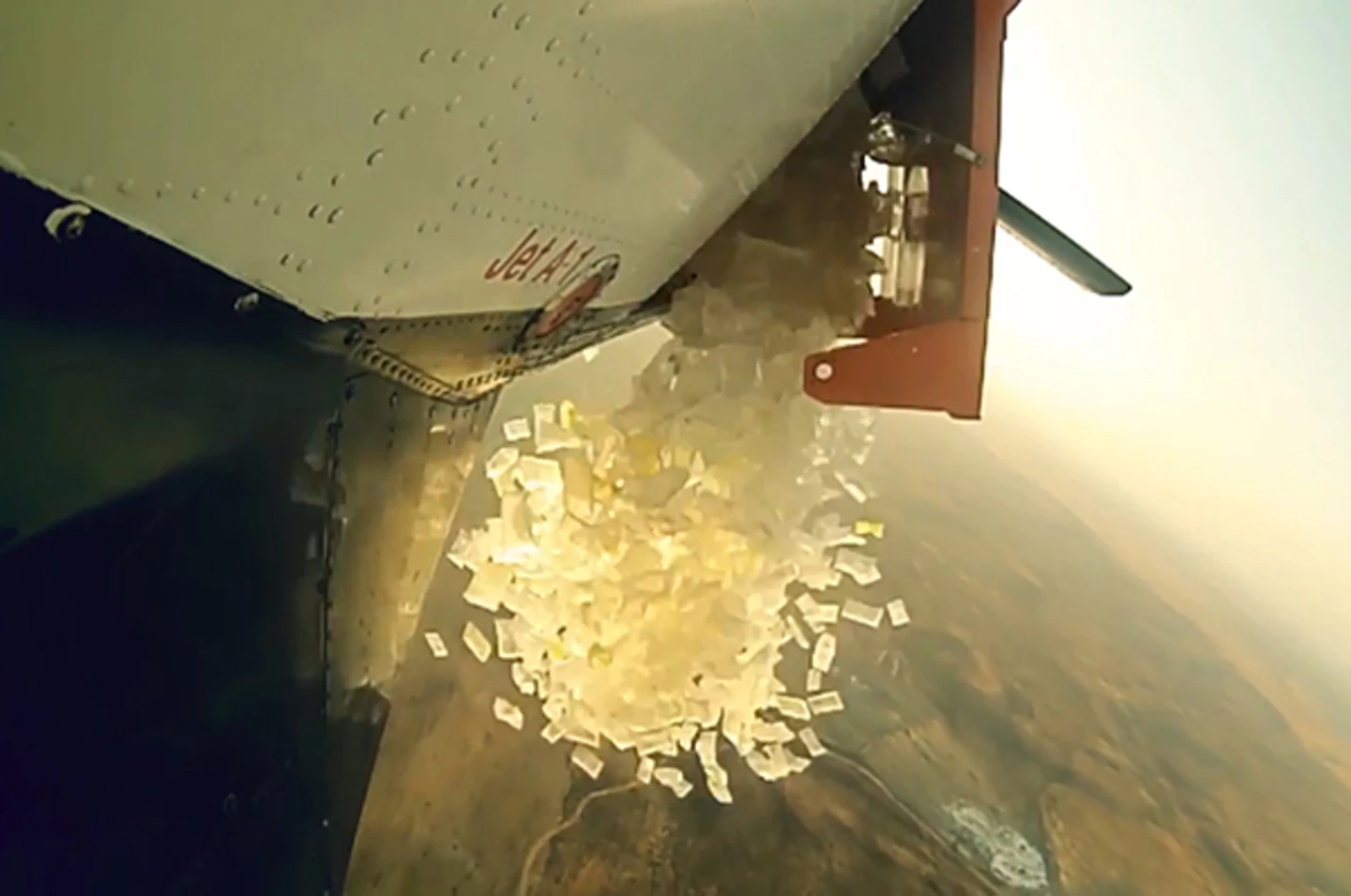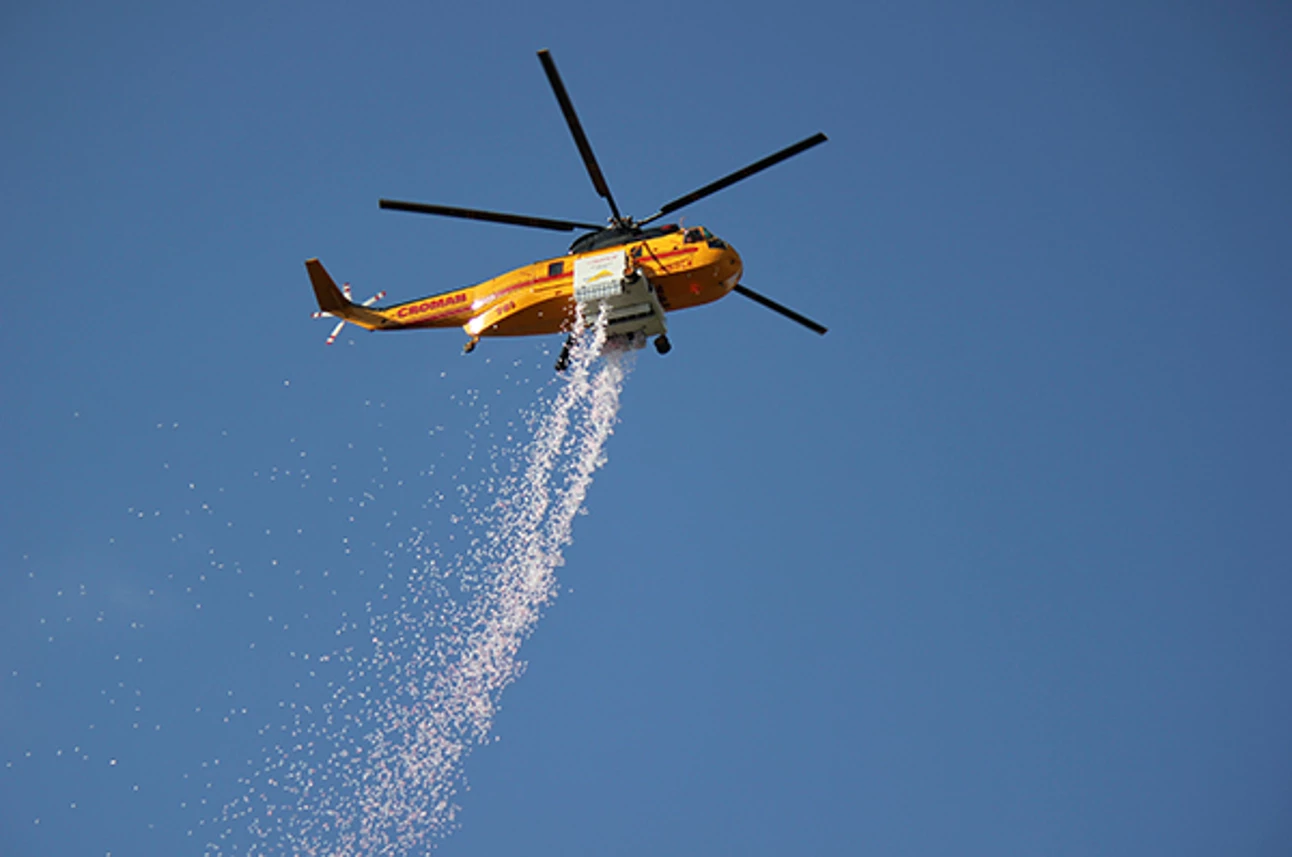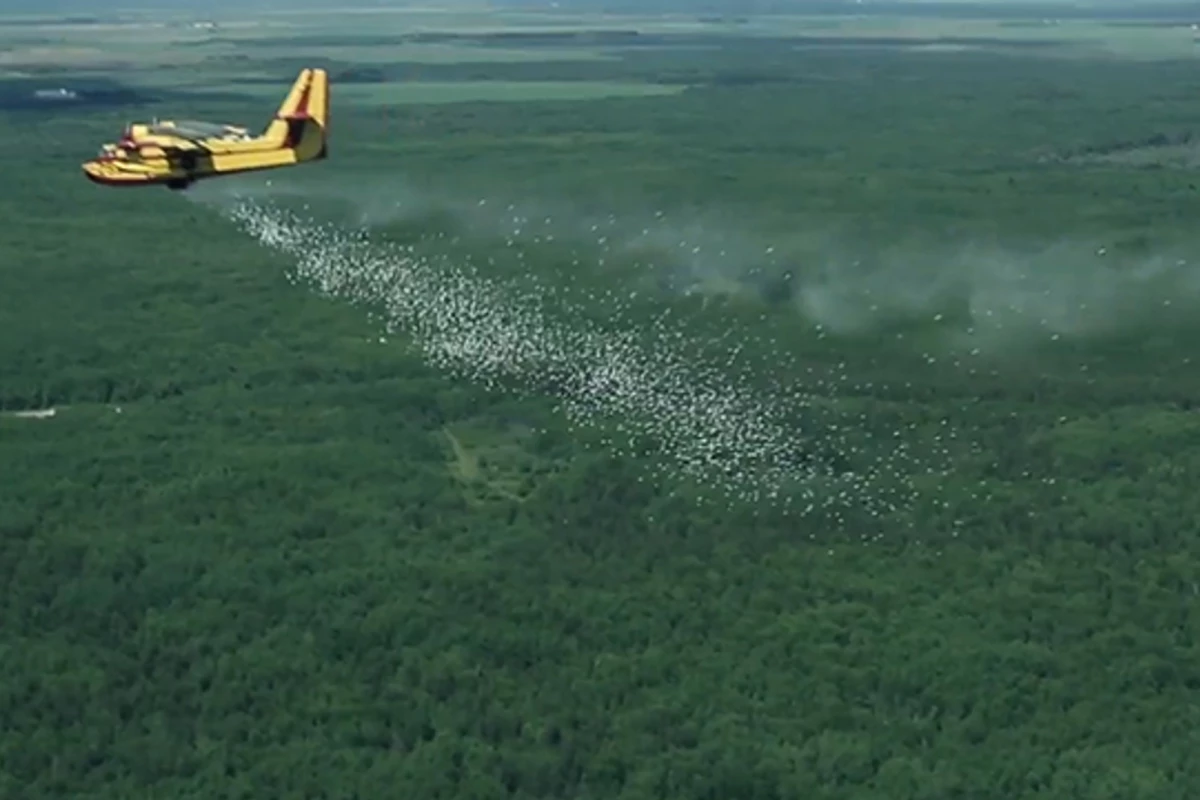As part of an effort to make firefighting safer and more effective, Israel-based international defense electronics company Elbit Systems has demonstrated a new high-altitude, high-precision aerial firefighting system that allows aircraft to drop fire suppressants from much higher altitudes. Called HyDrop, the system successfully dropped liquid pellets from two Air Tractor aircraft at altitudes of up to 500 ft (150 m) in a field exercise led by the Israel Fire and Rescue Authority.
Fighting fires like the ones that have recently ravaged Australia, California, and Siberia is a dangerous and complex business. Since 1953, one major weapon in the firefighter's arsenal has been the liquid cascade drop method, where water, foam, or other fire suppressants are dropped from low-flying aircraft.
And when we say low, we mean at between 100 and 120 ft (30 and 36 m). Such basement floor flying is extremely dangerous, but it's necessary because if the liquid payload is dropped from a higher altitude, it will turn into an aerosol and float away ineffectively.

This low altitude requirement means that drops are very limited in regard to payloads, aircraft used, terrain, and even the time of day. In particular, it's too dangerous to make drops at night, so the fire has many hours out of 24 to burn as it pleases.
According to the makers, HyDrop can operate with much greater flexibility because it can drop its load from four times higher than the average altitude, which is high enough to legally operate at night. In the recent demonstration, each aircraft dropped 1.6 tons of biodegradable liquid pellets weighing 140 g each, which were placed on a precisely computed ballistic trajectory that saturated the ground at a rate of one to two liters per square meter.

HyDrop is designed to work with helicopters, fixed-wing, and heavy-lifter aircraft and is based on fighter aircraft avionics, including a ballistic computer; a command, and control (C2) system; and advanced display systems. This guides the aircraft to the target and compensates for aircraft velocity, altitude, GPS location, wind conditions, and the weight and shape of the liquid pellets to make a precise drop from the specially designed airborne dispenser.
The company says that HyDrop comes with a static or mobile pellet-making machine that can fit in a standard 20-ft shipping container. This can produce 10 tons of pellets per hour, which can be filled with water or chemicals. In addition, the pellets are claimed to be free of harmful residues and are safe to be used around ground crews.
Source: Elbit Systems







